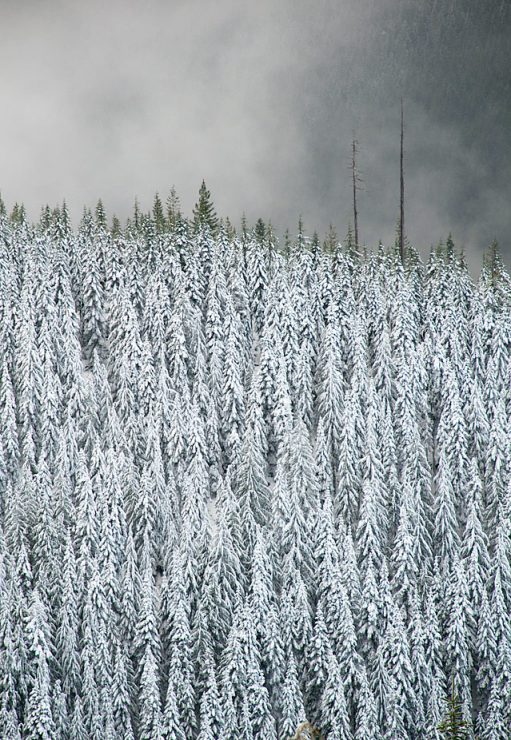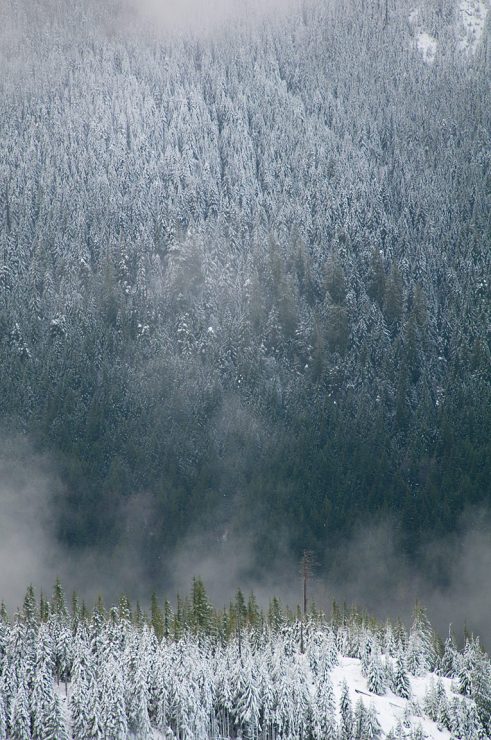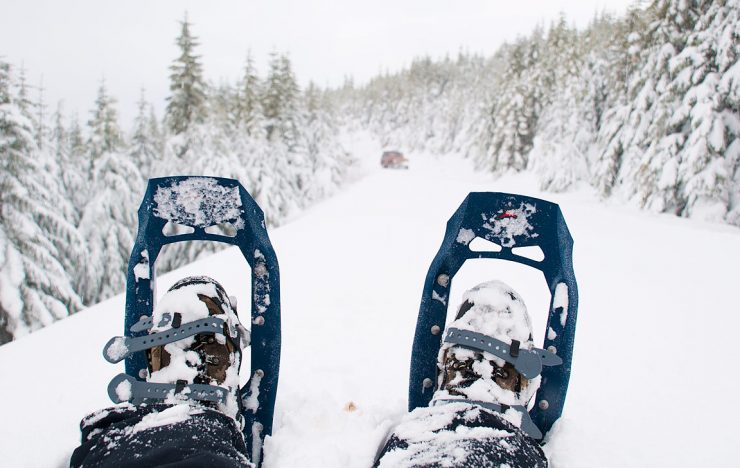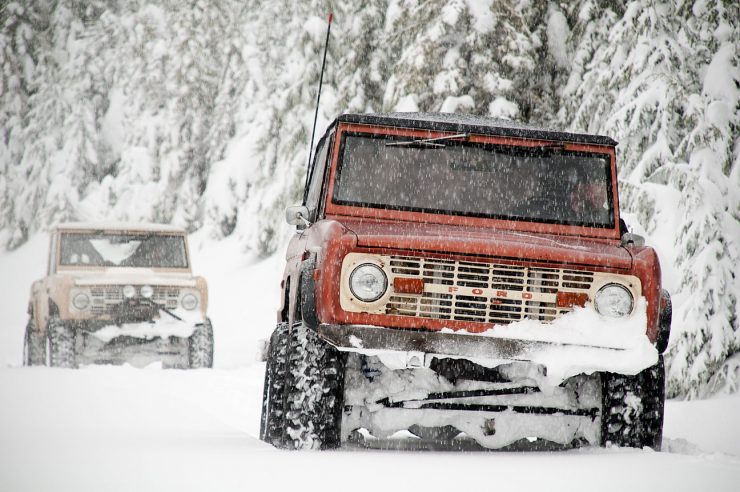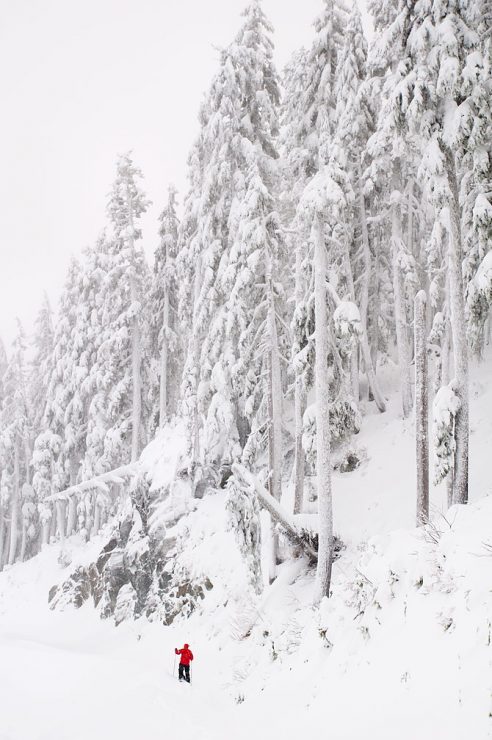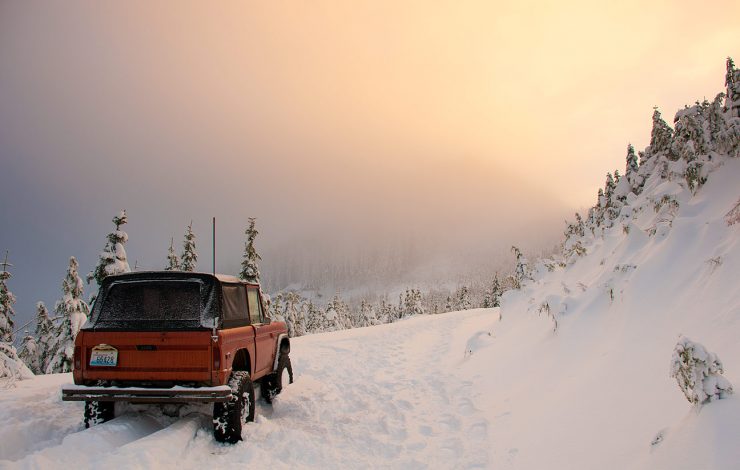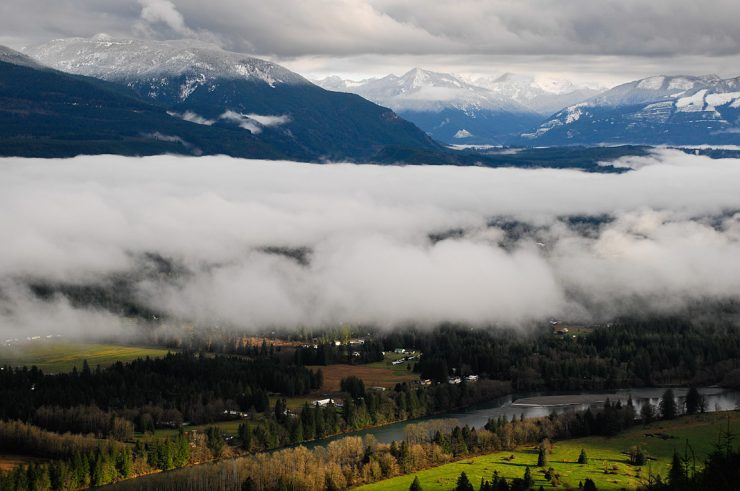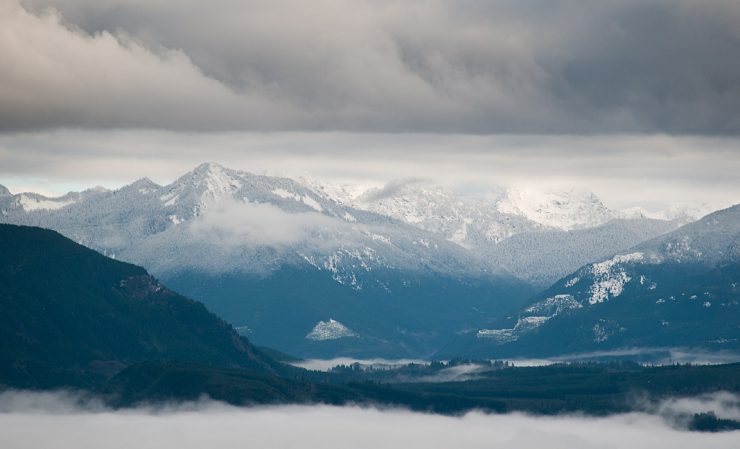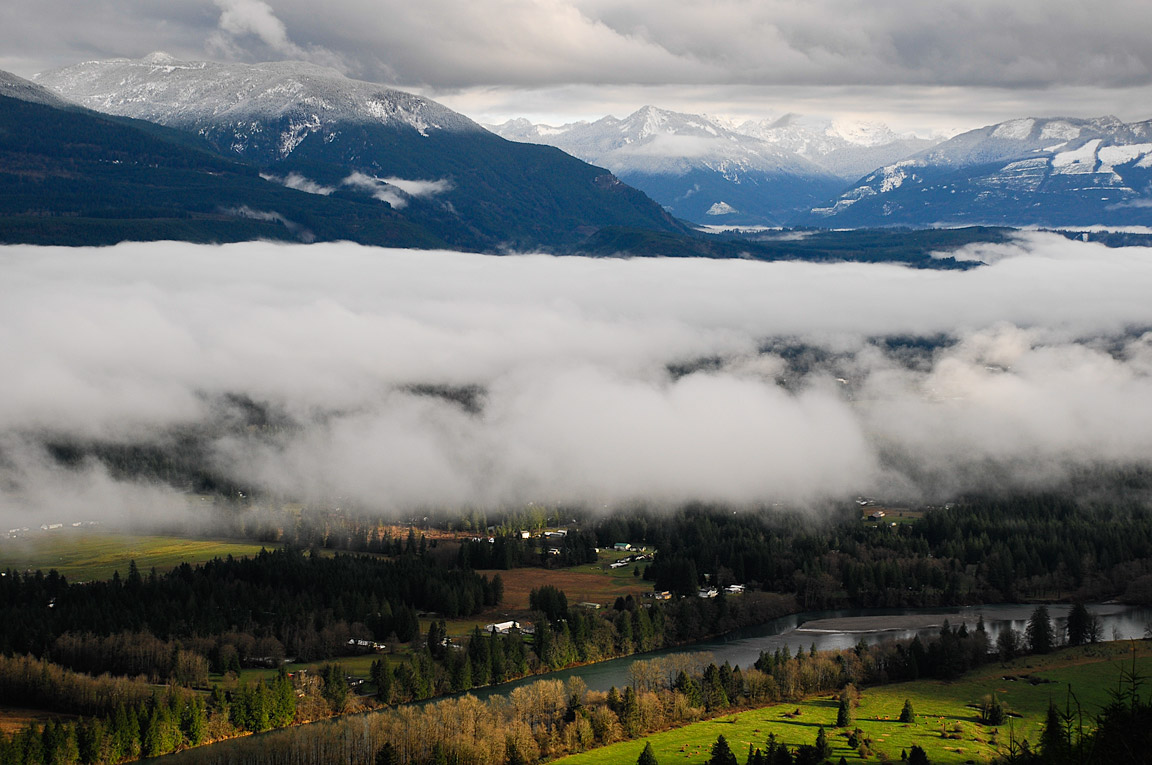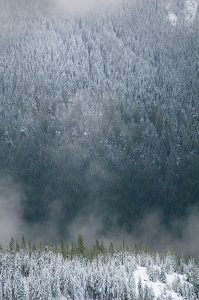We’ve had an unusually snowy winter here in the Pacific Northwest. As a rule, I’m not a fan of cold weather, but there’s something singularly beautiful about a landscape that is freshly covered with snow. If you can get up in the mountains into the deep powder, there is a kind of silent elegance that falls on the landscape that can’t be found anywhere else. To that end, I picked up a pair of snowshoes about a week before Thanksgiving (I got the MSR EVOs, as they seemed so much more versatile than the others, and they’re made here in Seattle), and planned a trip up into the mountains with a few friends with suitable vehicles. As it happened, there was heavy snow for much of the time, and not much light… so I didn’t end up with the greatest photographs, but it did remind me that there are a few special considerations that we should all keep in mind when taking photos in the snow.
The most important thing, of course, is to prepare for the weather. Wear warm clothing, carry some basic emergency equipment (matches, pocket knife, etc) and food. This is just common sense when going out into the snowy wilderness. For a photographer, though, it is especially important to wear clothing that will keep you warm and comfortable, because you’ll frequently be stopping and waiting for lighting to change, and it’s hard (for me, anyway) to concentrate on framing a beautiful photo when I’m shivering and just want to get back to someplace warm. Also, make sure that someone knows exactly where you are, and check the weather and avalanche danger. Carry sunglasses or goggles and sunscreen.
- Use exposure compensation in the snow! When you’re shooting a scene that is dominated by snow, set your exposure compensation to +2 stops, as a general rule. Even very sophisticated metering systems can be tricked by white landscapes (or any white subject, for that matter) and cause snow to be under-exposed as grey and mid-tone details to be lost in shadow. Check your histogram. If there’s still space between your data and white point, bump your exposure up another stop, just make sure that you stop short of clipping highlight detail.
- Bring extra batteries. Batteries are critical to digital photography, so you should always have extras… but their lives are shortened significantly in cold weather, especially very cold weather. On the bright side, digital noise is somewhat reduced as well.
If snow is falling, it’s usually best not to use flash (at least, not on your camera). Snow in the air is very reflective, and creates bizarre blotches and shapes rather than a pretty effect, usually.
- White balance is especially critical when so much of your scene is white. As usual, I recommend shooting RAW. It’s also helpful to shoot a color swatch like the X-rite passport so that you can get accurate color rendition, though this isn’t really necessary. If you can’t shoot RAW, manually set your white balance by pointing it at a patch of snow and following your camera’s instruction to use it as the white balance reference point.
- If your camera isn’t weather sealed, make sure that you keep it dry. If you carry it away from your body and let it drop down to the ambient temperature, snow falling on it is less likely to melt immediately and work its way in to the electronics. Otherwise, use a plastic bag and a couple of rubber bands to keep the snow off.
- Don’t forget about the details. Frosty details can be gorgeous, whether they’re frost covered leaves or reflections in the ice. Keep an eye out for colors that are reflected in the snow and ice; sunsets and early morning colors can add an extra layer of beauty to an already good composition.
- Mittens. Maybe it’s just that fact that I don’t like to be cold, but I prefer mittens to gloves to keep really warm, but I wear a mitten shell with glove liners so that I get the warmth of a mitten but when I need to manipulate the settings on my camera, I can slip my liner glove out of the shell and make the changes while keeping my hand relatively warm. Outdoor Research makes some good ones.
More tips?
These were just the first ideas that came to mind. If you have some additional winter photography tips to share, please comment!
